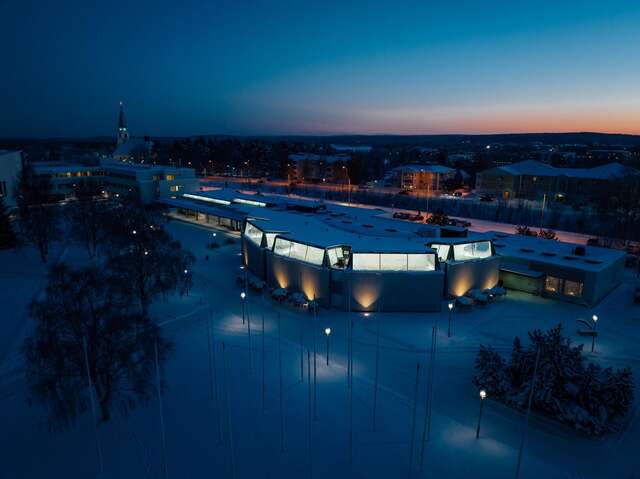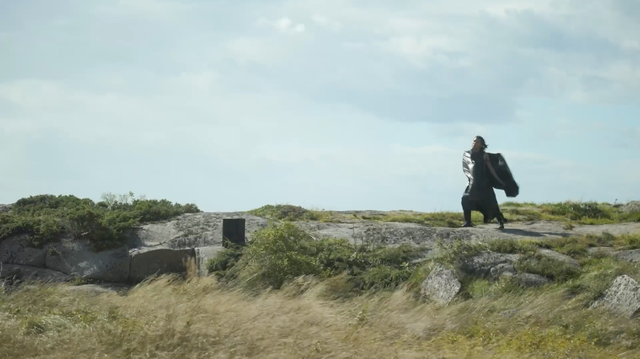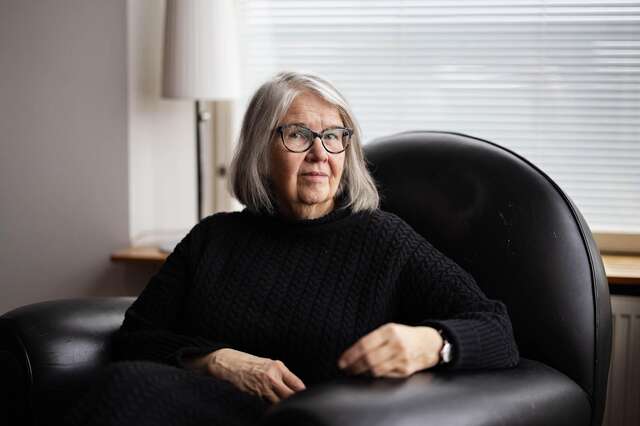Demolition frenzy threatens sacral buildings – how will our architectural heritage survive?
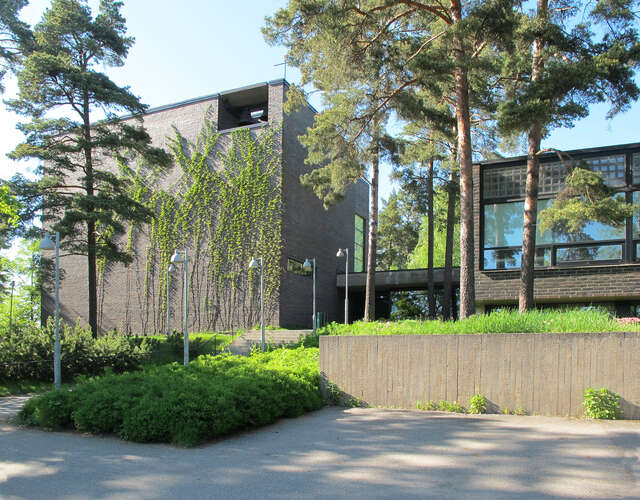
Pallivaha Church and Parish Centre. photo: Mikko Laaksonen
Finland is experiencing an extraordinary wave of demolition. Churches across the country are part of this phenomenon, and the future of many sacral buildings is at stake. Archinfo's communications intern, Henrik Hynninen, examines five different sacral spaces and their prospects.
One of the most topical issues facing construction at a national level is the demolition of existing building stock. The demolition wave has spread across Finland and affects even buildings of great architectural value. Several sacred spaces are also to be washed down by the wave. The Evangelical Lutheran Church of Finland governs some 800 church buildings, many of which will be or have already been condemned to be demolished.
A significant number of churches are protected, up to about two-thirds of the Evangelical Lutheran churches. The Church Act automatically protects every church building built before the country's independence in 1917. In addition, 45 later churches have been protected by a separate decision.
Edla Mäkelä, Senior Architect of the Central Church Administration, explains that a permit must always be applied from the central administration for any substantial alteration or demolition of a protected church building. Permission must also be sought if the congregation gives up the use of the church.
"The period from the 1950s to 1980s saw a great number of new sacred buildings often called parish houses or parish homes constructed. These buildings may include a space of worship and even a bell tower, but they are not confirmed as church buildings under the Church Act," says Mäkelä.
"Therefore the future of these parish centres is almost exclusively the responsibility of the congregation that owns the premises, and the decision to demolish them does not require a permit from the church's central administration but merely from the building control services."
Money dictates also the future of churches
Economic considerations are always involved in the decision to demolish, and the plots of sacral buildings in need of significant repair are often seen as potential sites for new construction. If the building is located in a central location, the plot's financial value may be seen as its most important characteristic. The building sector in Finland has focused on new construction rather than repair and redevelopment, which has the opposite effect on climate change mitigation objectives.
As church membership steadily declines at one to two per cent per year, churches across Finland are forced to reorganise their activities and consider disposing of assets causing expenses. The aim has been to safeguard church operations and the jobs of their staff, so the austerity measures will focus on disposing of properties. Many church buildings are also underutilised, and parishes do not see any justification for maintaining them in the future.
A recent example of a lost case is the culturally and architecturally significant Pallivaha Church and Parish Centre in Turku. Completed in 1968 and designed by one of the most prominent architects of his time, Professor Pekka Pitkänen (1927–2018), the Brutalist complex is an impressive example of modernist church architecture.
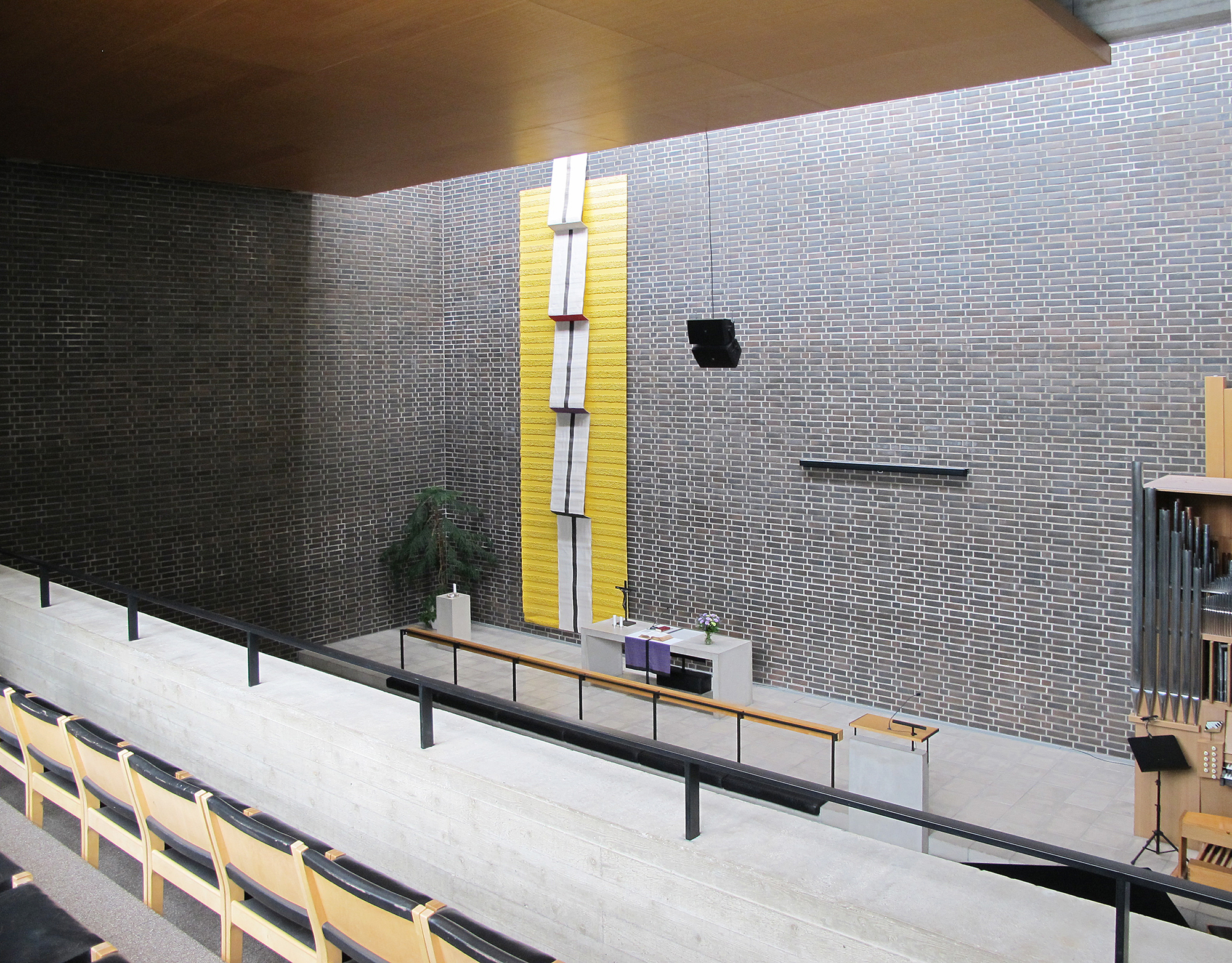
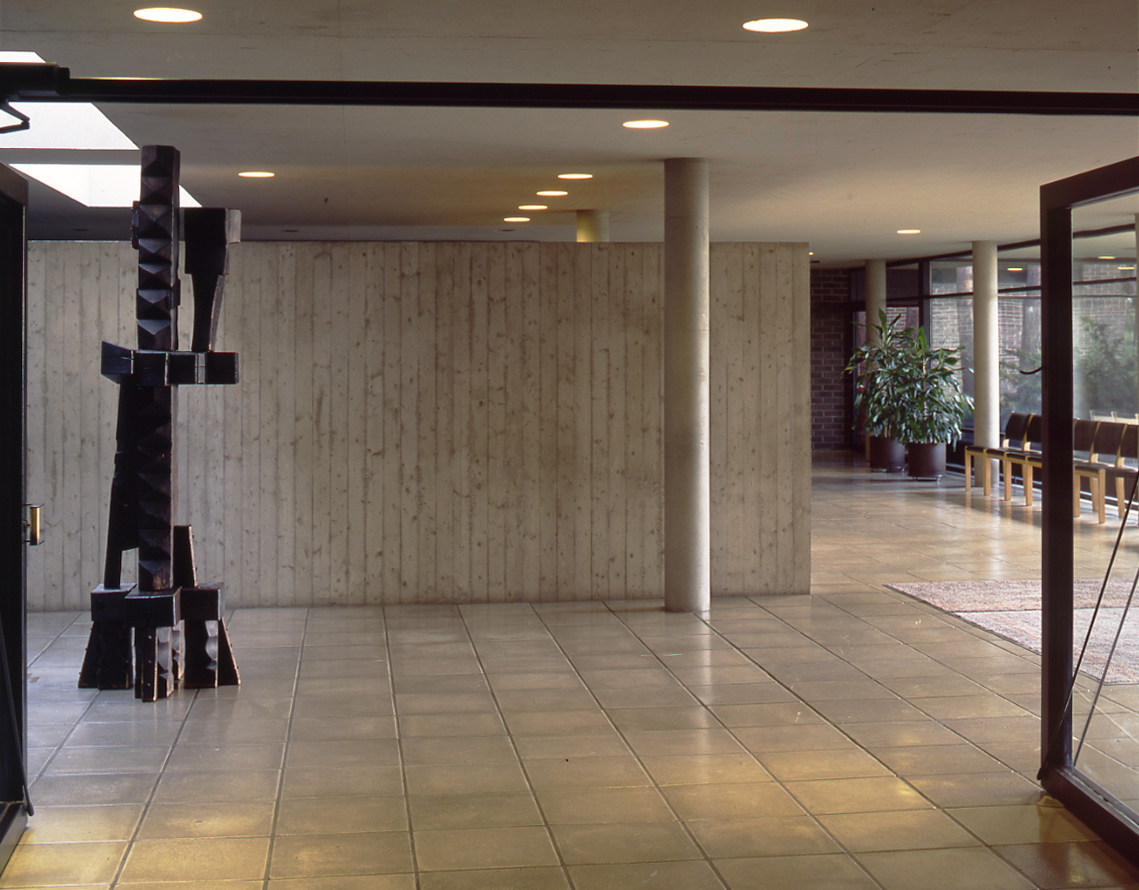
The building has been closed since 2016 due to indoor air and humidity problems. In addition to defects dating back to the construction phase, the extensive repair list for the deteriorated building caused the parish to dismiss renovation.
In 2017, Turku and Kaarina Parish applied for a demolition permit for the Pallivaha Church, which is considered to be of regional significance. The permit was not granted at that time, as the demolition would have required alterations in the zoning plan. However, in 2021, the Turku City Council passed the zoning change. Still, the decision was appealed to the Administrative Court by the Regional Development Agency of Southwest Finland as well as the housing company of the church's neighbouring plot, and the Turku-based nonfiction writer Mikko Laaksonen.
In February 2023, the Turku Administrative Court rejected the appeals against the zoning change, making demolition possible. The lengthy process will soon come to an end, as the church's demolition is scheduled to begin soon. A commemoration ceremony was held in October 2023, and the building, which bears much significance to the local community and lovers of modernist architecture alike, will soon cease to exist for good.
"It is becoming a practice to demolish a modernist building when its condition is invoked. This is the case even if a modern building has greater architectural value than some older building, which according to the prevailing practice is protected," says Mikko Laaksonen, who has authored a book on Pekka Pitkänen's architecture.
Is the need for repair sufficient to justify demolition?
Another architecturally significant sacral building with a bleak future can be found in Kirkkonummi. The Kirkkonummi Parish Centre, completed in 1984, is one of the key works of architect and Academician Juha Leiviskä (1936–2023).
The building has been found to have indoor air problems that could be solved by renovation, but demolition was already raised as an option in 2018. At that time, however, the parish decided to repair the building, but two years later, the Kirkkonummi Parish Council reversed itself and decided to demolish the entity.
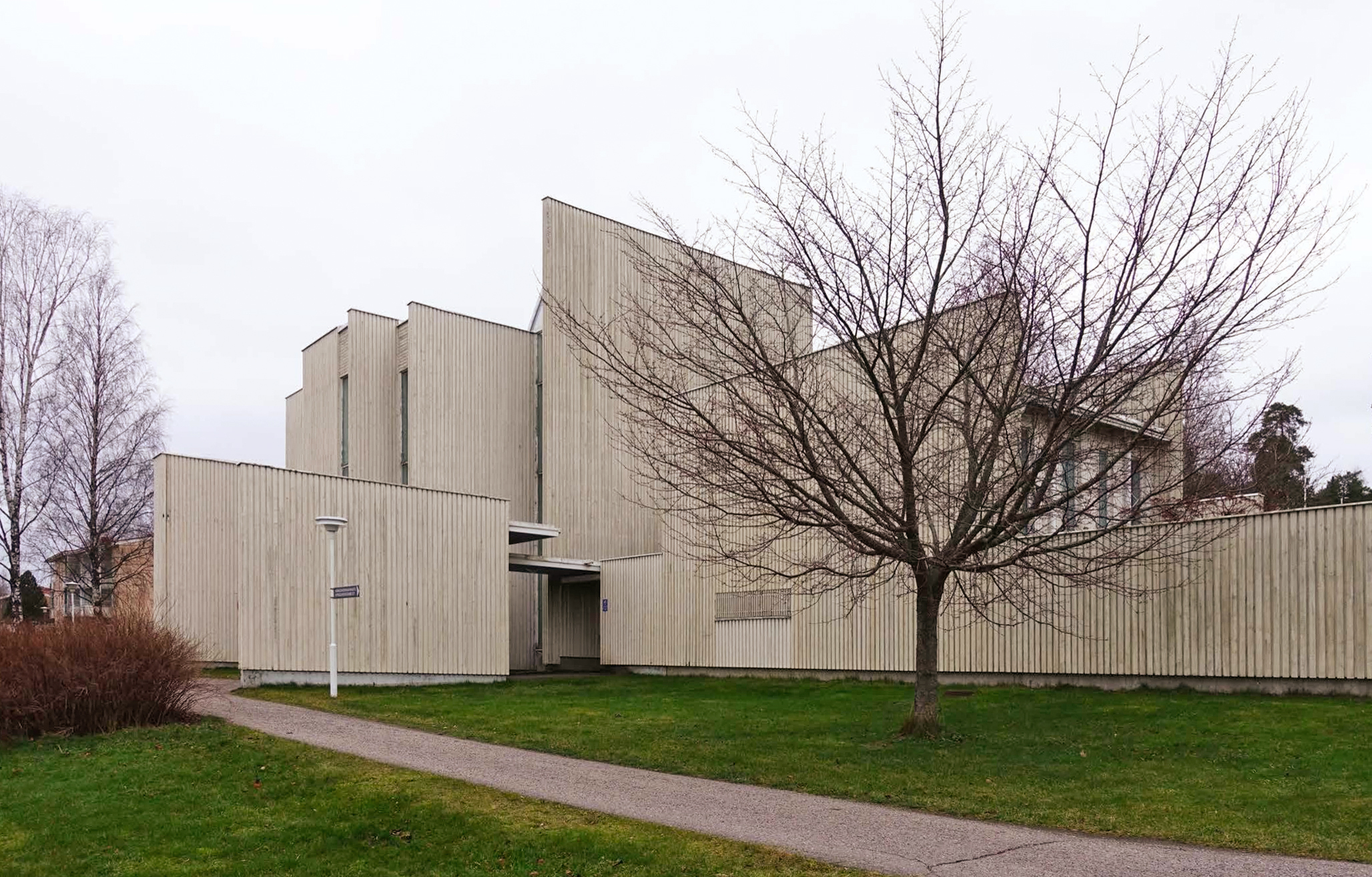
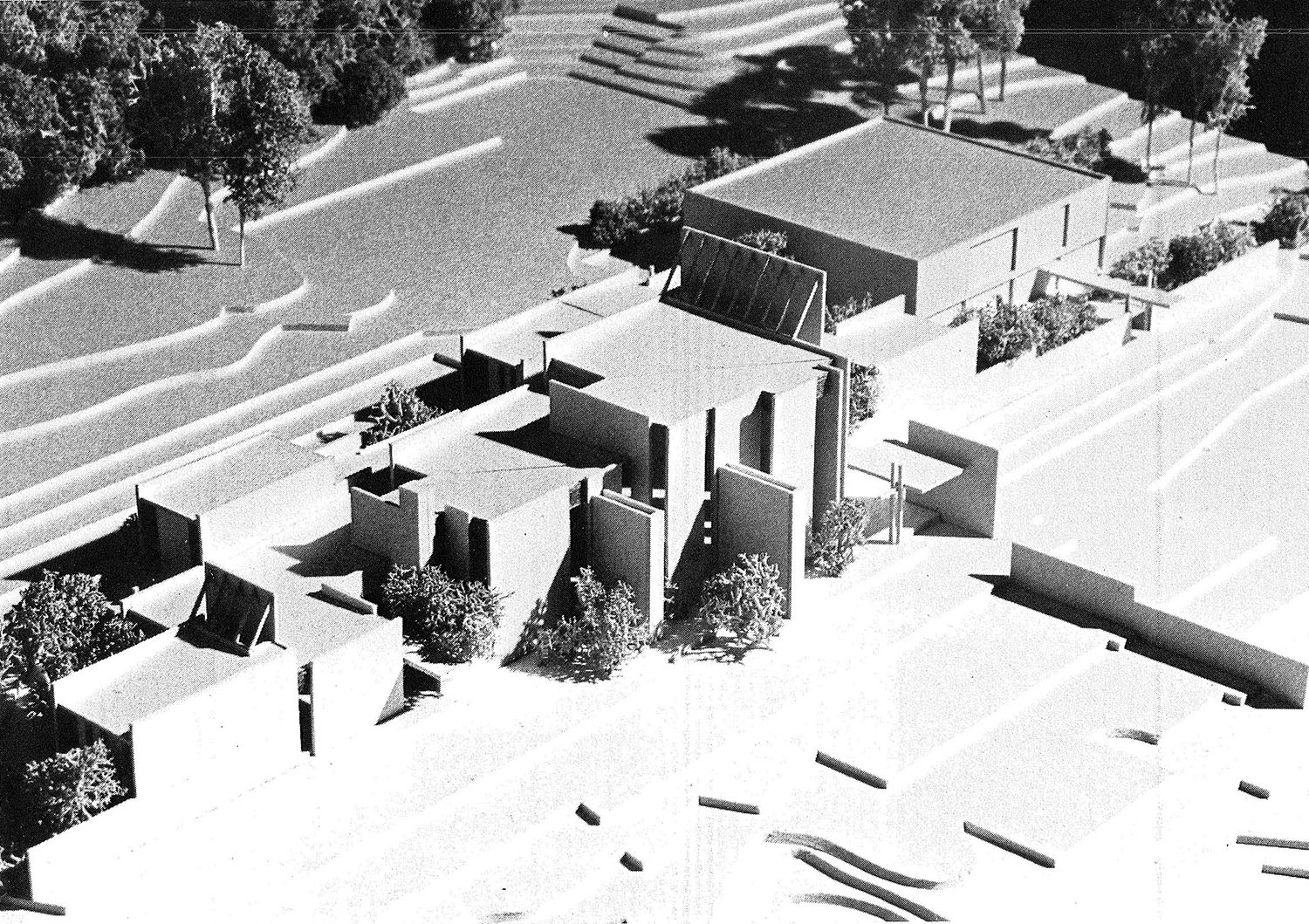
After the decision, in late 2020, the Finnish chapter of Docomomo, an international organisation specialising in the conservation and documentation of modern architecture, submitted a proposal to the Uusimaa Regional Development Agency (ELY) that the building should be protected under the Building Heritage Act. The ELY centre rejected the protection proposal, and Docomomo and the National Board of Antiquities appealed the decision to the Helsinki Administrative Court. The appeal was dismissed in 2023.
Jonas Malmberg, President of Docomomo Finland, says the organisation has appealed the decision to the Supreme Administrative Court.
"The grounds for the demolition of Kirkkonummi Parish Centre are unsound. At worst, the case could lead to being a dangerous precedent," says Malmberg.
The demolition of the parish centre has been justified, among other things, by the fact that other Leiviskä buildings remain in various parts of Finland, and that the building's poor condition goes beyond its architectural value. Could it happen that other buildings could in the future be demolished on these questionable grounds, too?
Fortunately, the game is not entirely over in regards to the Kirkkonummi Parish Centre.
Churches of cultural and historical significance will also be preserved
However, the situation is not as bleak for all modern church buildings, and many sacral buildings of architectural value are currently being renovated. An example of a bright future is the Myyrmäki Church, also designed by Academician Juha Leiviskä. Completed in 1984, the church known as Leiviskä's masterpiece, combines natural light, holiness and geometry.
Myyrmäki Church has been closed since 2019, again due to indoor air problems. The future of the building has been discussed for a long time, and in public debate, demolition was also considered an option. However, the parish or the local community did not support the demolition but instead, the church's exceptional nature was recognised, and the parish had a strong will to repair the building.
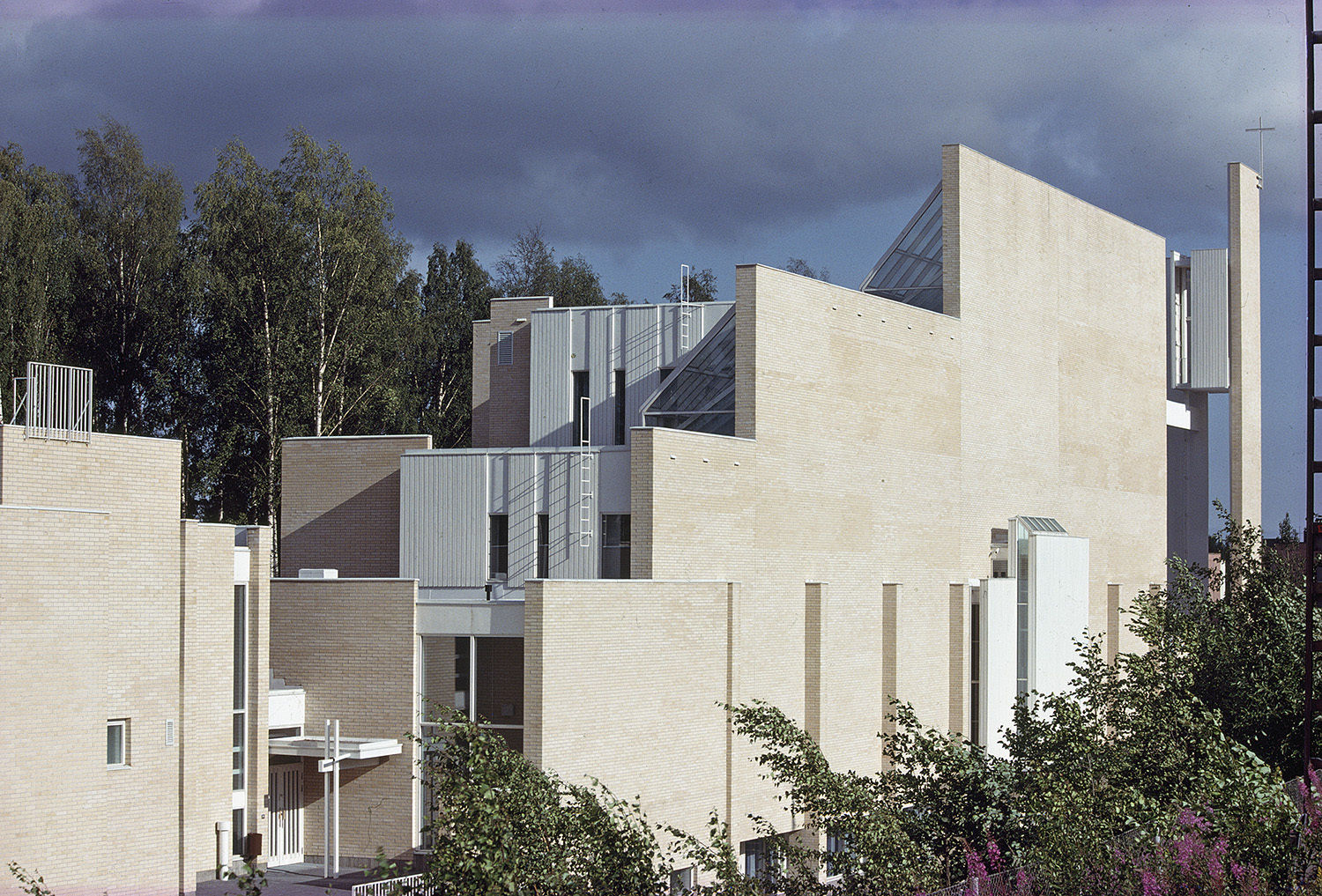
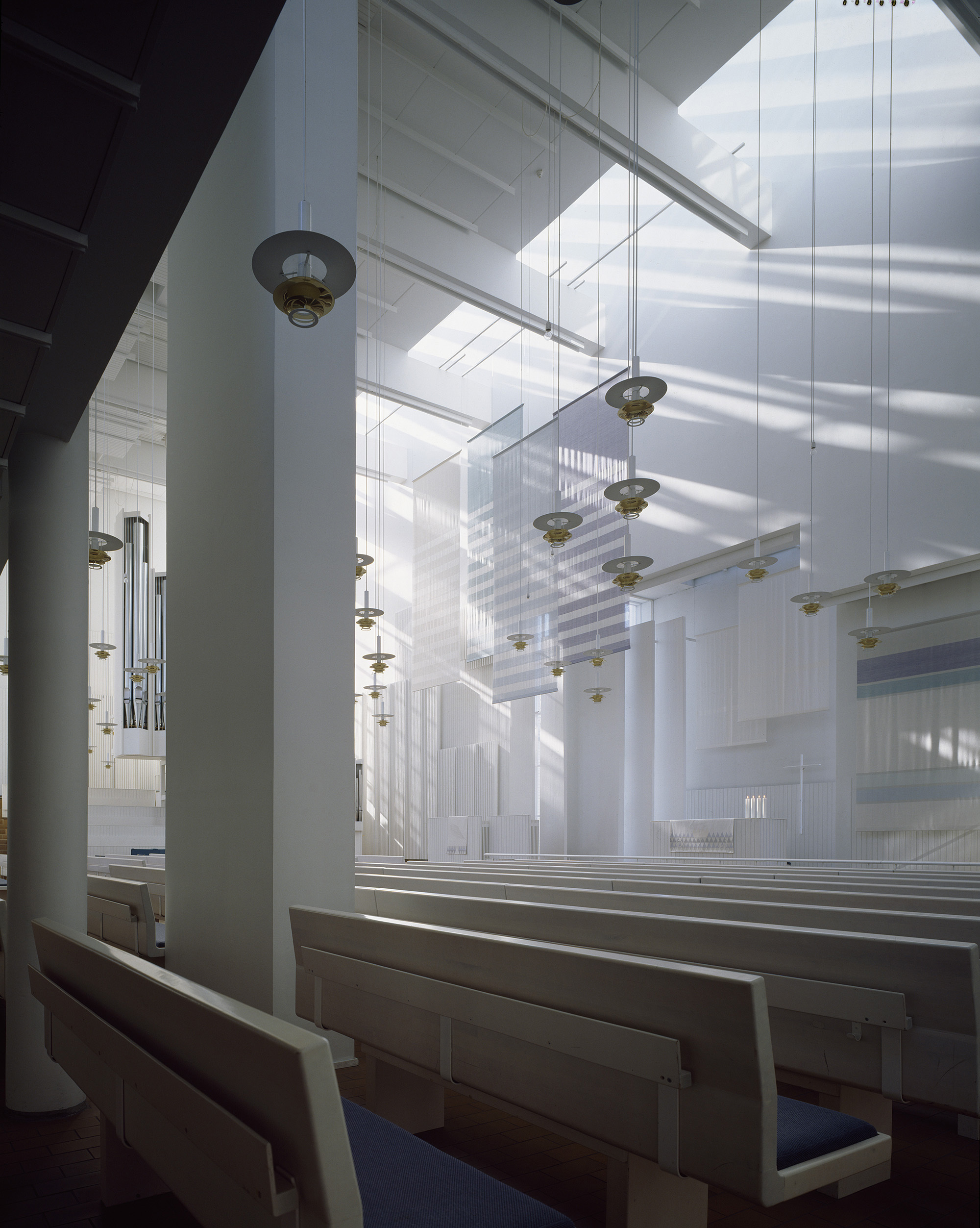
Hence, the decision to renovate Myyrmäki Church was taken, and the work began in Spring 2023. The roofing celebration for the renovation site was held in mid-January, and the works are expected to be completed in Autumn 2024. The renovation, which will cost around €15 million, will preserve as much of the original appearance as possible, from the façade to the church hall.
Hans Tuominen, Vicar of the Vantaankoski Parish, says that the parish is currently planning how the Myyrmäki church could serve the area’s people of different ages as versatile as possible when it opens.
"People living in the parish area have been waiting for the church to be renovated for years, and enquiries about the renovation come in weekly. It shows how important the church is to the people," says Tuominen.
"I am really pleased with the way the works have progressed. We will have a functional, healthy and safe church, and we look very much forward to returning to the church premises in September of this year."
Preservation requires cooperation
The positive examples do not stop there, as the Vuoksenniska Church, designed by architect Alvar Aalto (1898–1976), is also being renovated in Imatra. This church, completed in 1958 and also known as the Church of the Three Crosses, is one of Aalto's most significant later works and is part of an ensemble of thirteen Alvar Aalto buildings that are being proposed for inclusion in the UNESCO World Heritage List.
The church's poor condition has been a long-standing issue, and the building has been closed since November 2020. In early 2024, renovation works finally started, with an estimated total cost of around €4 million.
According to Edla Mäkelä, Senior Architect of the Central Church Administration, the Vuoksenniska Church renovation is a very challenging project, including repairs from the foundations and structures to the roof. The building is also protected by a separate decision in the Church Act, which means that its original architecture must be preserved.
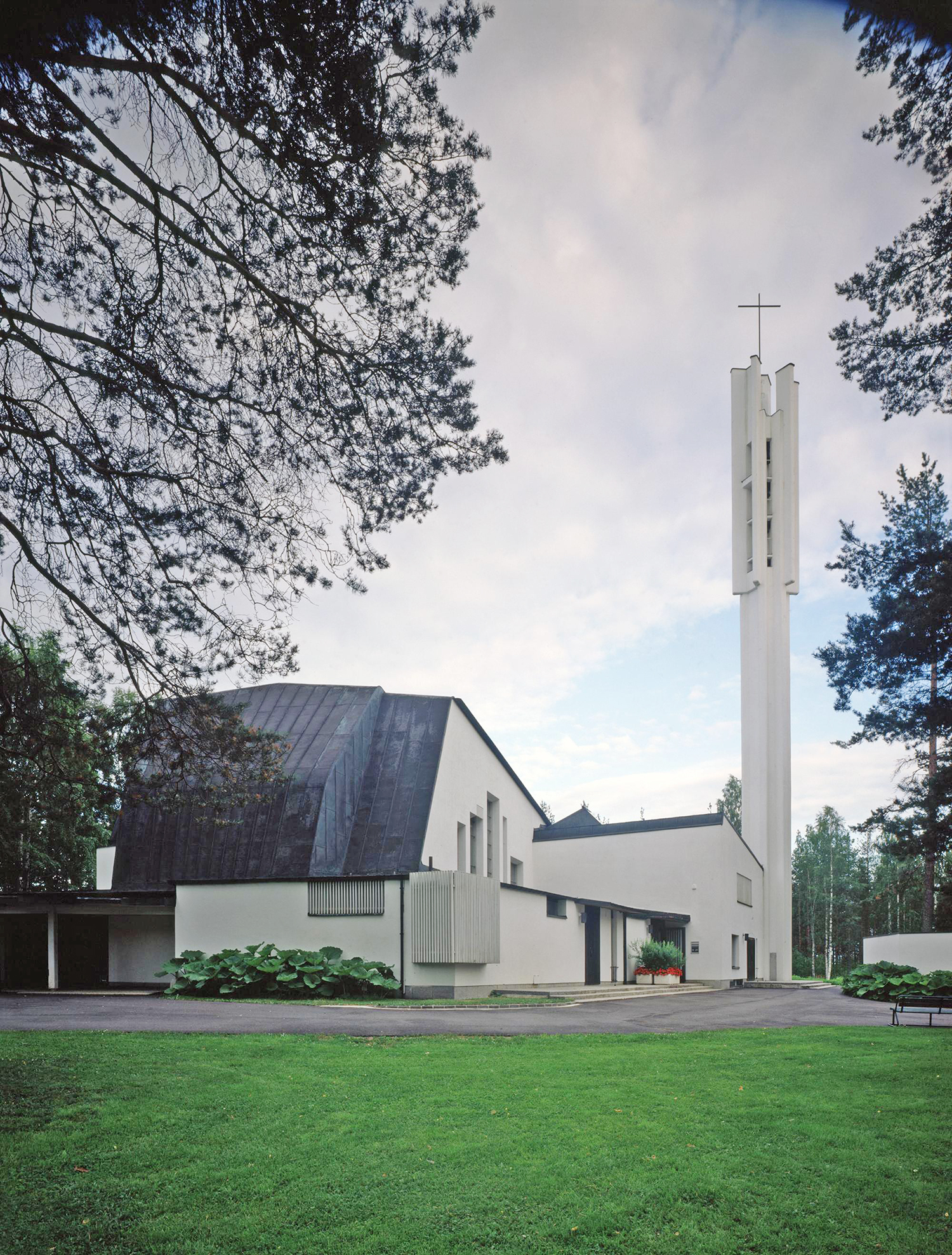
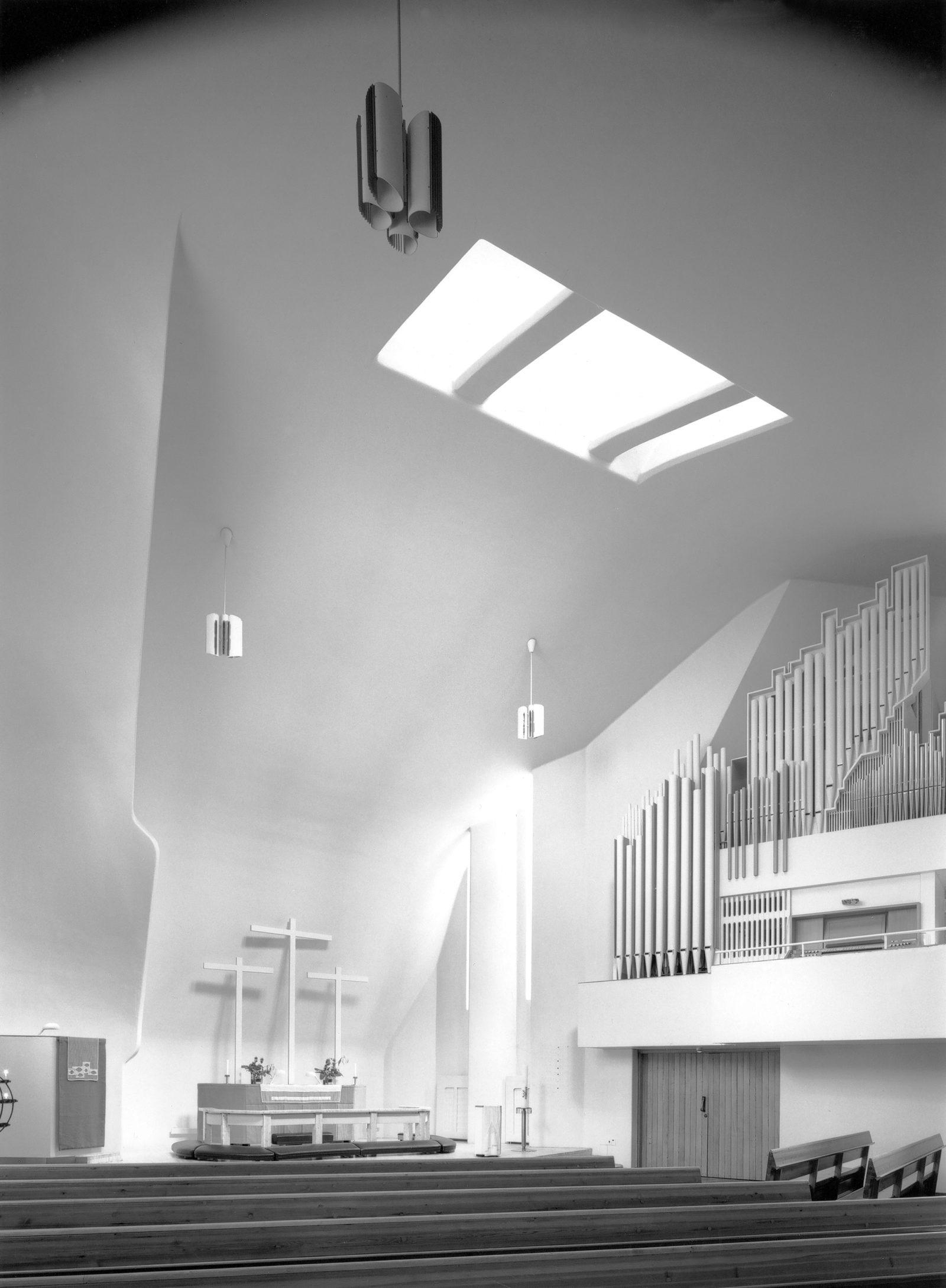
For a small parish in a declining factory town, repairing the building represents a major investment and a financial risk, as the parish has had to apply for a loan for the repair. Fundraising has also been organised, and significant donations have been received from abroad.
However, from the perspective of Jonas Malmberg as the Chief Architect of the Alvar Aalto Foundation, the ongoing renovation of Vuoksenniska Church has been a very positive experience.
"Cooperation with the Imatra Parish has been easy and professional, as the building is also important to the parish. For the renovation of the church, careful trial repairs were carried out, which allowed the work to be carried out in the most cost-effective and high-quality way possible," says Malmberg.
The local contractors and the Alvar Aalto Foundation have a strong desire to do the best possible job preserving the building for future generations. The renovation design, led by architect Tapani Mustonen, will involve most of the same team that renovated the Vyborg Library.
Recycled materials have also been used in the renovation. For roof reparation, copper was donated from the recently demolished Töölö Hospital's accident and emergency ward in Helsinki, which dates back to the same construction time as the church. Regarding patina and the material’s properties, the recycled copper will match the church's original roof much better than new copper.
Fresh ideas are needed to keep churches in use
Hence, despite the churches' limited resources and the ongoing demolition wave, positive examples exist. However, few sacral buildings built after WWII have the same cultural heritage value as the churches of Myyrmäki or Vuoksenniska. Should congregations in financial difficulties, then, instead of demolishing the buildings consider selling or developing them for new uses?
"The most vulnerable at the moment are the parish-centre-type churches. They could easily be converted for use as schools, kindergartens, sports facilities or other similar uses," says Mikko Laaksonen, who is passionate about modern architecture gems.
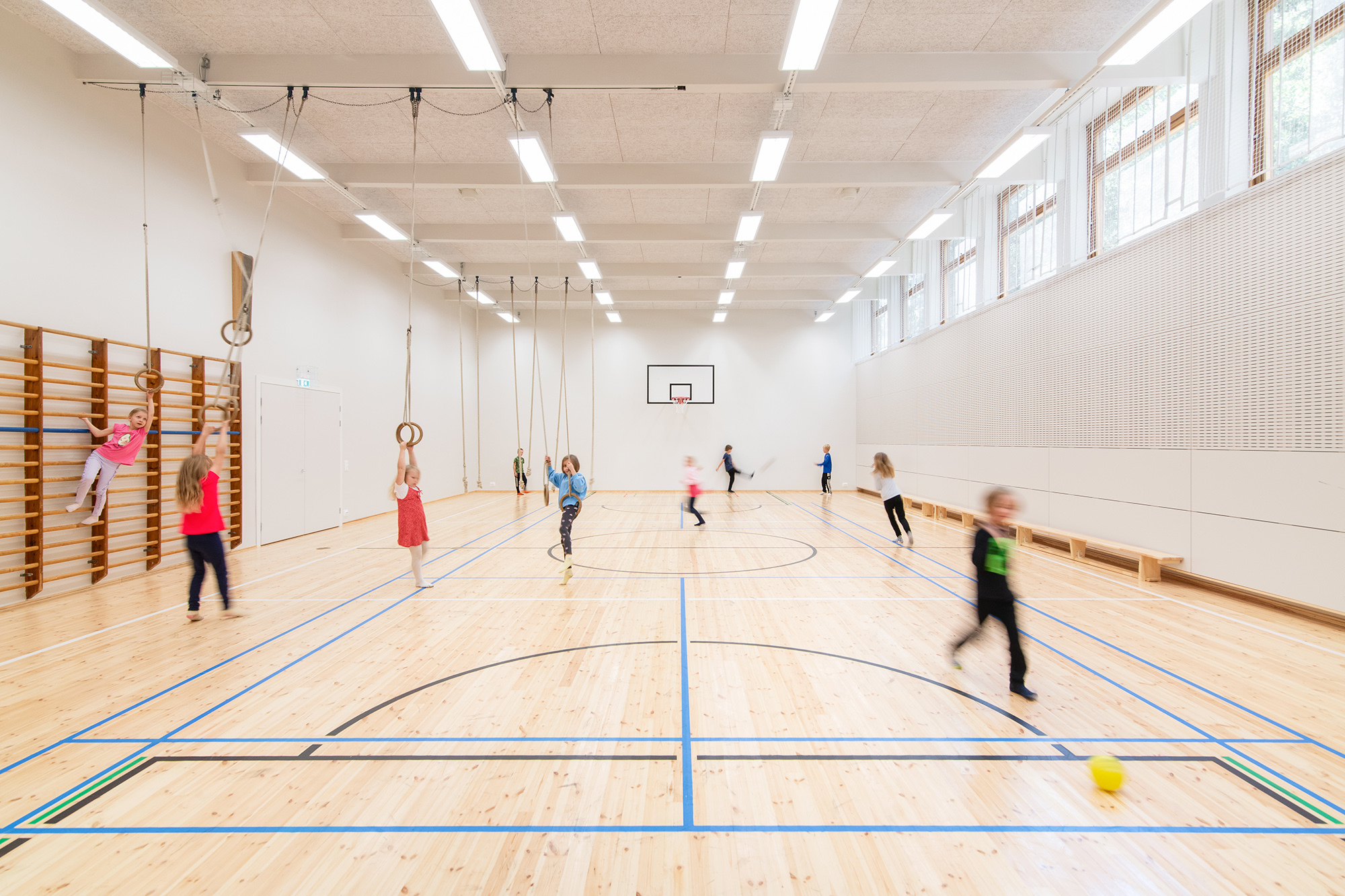
An example of a successful redevelopment is the Lauttasaari Church in Helsinki, which combines the parish's aims to fulfil the church's primary mission of providing spiritual care for local residents with offering other activities. In the renovation and conversion works of the church, originally designed by Marja and Keijo Petäjä and completed in 1953, facilities ranging from a café and lunch restaurant to a woodshop, sauna and gym were added. The building is also home to the Lauttasaari Music Institute, a Swedish-speaking parish and two scout troops.
The renovation designed by Verstas Architects brought Lauttasaari Church a Finlandia Prize for Architecture nomination last year, which indicates that the building's architectural and cultural-historical value has been well preserved. Instead of demolition reports in the media, it would be nice to read more news about such things.
On a Juha Leiviskä interview documentary produced by Archinfo in 2019, the architect also talks about the design of Myyrmäki Church (from 6:30 onwards).
Read more about the featured churches in the Finnish Architecture Navigator:
Pallivaha Church and Parish Centre
Kirkkonummi Parish Centre
Myyrmäki Church
Church of the Three Crosses
Lauttasaari Church
